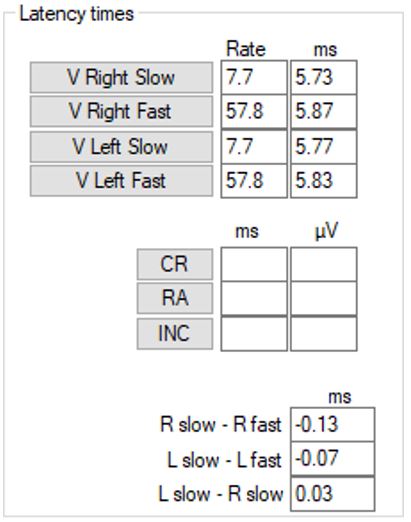Neuro Latency Testing
What is Neuro Latency Protocol?
The default Neuro Latency protocol is designed to evaluate the integrity of the neurologic system. The changes in response latency between the right and left ear at slow stimulation rates are recorded and compared. The Eclipse offers both markers and performs the calculation between the inter-peak Wave I, III & V latencies (between Left and Right). The purpose of the test is to look for retro cochlear pathology.


How does it work?
The test is run like a traditional ABR. The clinician tests at a high intensity (ex. 80 or even 90dBHL) with a slow rate (i.e. 11.1Hz). The Wave I, III & V for the tracings is marked with the appropriate markers. After they are marked, interaural wave I, III & V and the intra-aural change is calculated.
An interaural difference of maximum 0.3ms is often used as critical value in clinical practice (Stürzebecher et al., 1985; Olsen et al., 1997).
References
Stürzebecher, E. Kevanishvili Z., Webrs, M., Meyer, E., Schmidt, D. (1985). Interpeak intervals of auditory brainstem response, interaural differences in normal-hearing subjects and patients with sensorineural hearing loss. Scand Audiol (14)2 83.
Olsen, W.O., Pratt, T.L., Bauch C.D. (1997). Consistency in latency measurements and interpretation of ABR tracings. American Journal of Audiology, (6)57-62.
